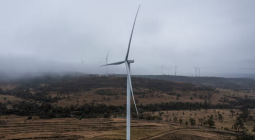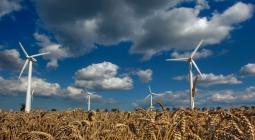Chinese Manufacturer Unveils 28-MW Offshore Turbine, World’s Biggest
A wind turbine manufacturer in Chengdu, China has unveiled the world’s biggest offshore wind turbine, a 26-megawatt machine with more than 30,000 parts that is nearly 10 MW larger than the previous record-setters.
The announcement by state-owned Dongfang Electric took the offshore wind industry by surprise, Bloomberg News reports, at a time when stiff competition has triggered a price war across the industry.
“Turbine manufacturers are looking to increase the size of offshore equipment to reduce costs by generating more power from fewer units,” Bloomberg says. “Lower prices are still needed because the technology remains more expensive than fossil fuels such as coal in most parts of the world,” and “Chinese manufacturers also face fierce competition from their peers.”
Dongfang, which also produces an 18-MW turbine, said the blades on the new units measure 310 metres in diameter. The device covers a swept area of 53,100 square metres, “roughly the size of seven standard soccer fields,” writes REVE. A single turbine can deliver 62 million kilowatt-hours of electricity per year, enough to power 37,000 households and cut carbon dioxide emissions by 62,000 tonnes.
“With its semi-submersible floating platform and mooring system, enhanced by smart control and sensing technologies, the turbine extends wind power’s reach into deeper waters, ensuring stable operation,” REVE adds. “The turbine offers customizable options for various water depths, providing optimized solutions for deep-sea wind power resources.”
In its announcement, Dongfang called the turbine “the latest achievement of the rapid technological progress of the entire industrial chain of China’s wind power equipment,” adding that it “provides strong technical support for helping China build a new power system and achieve the ‘dual carbon’ goal.” That government objective calls for the world’s biggest present-day source of climate pollution to peak its emissions by 2030 and hit carbon neutrality by 2060.
The turbines can also withstand a Category 17 typhoon, packing winds of up to 220 kilometres per hour, using technology that withstood Super Typhoon Makar in early September, Dongfang said. Makar, known elsewhere as Super Typhoon Yagi, killed two people and injured 92 others “after what’s likely the strongest storm to hit southern China in a decade made landfall,” BNN Bloomberg reported at the time.
Cover photo: mmatsuura/flickr




